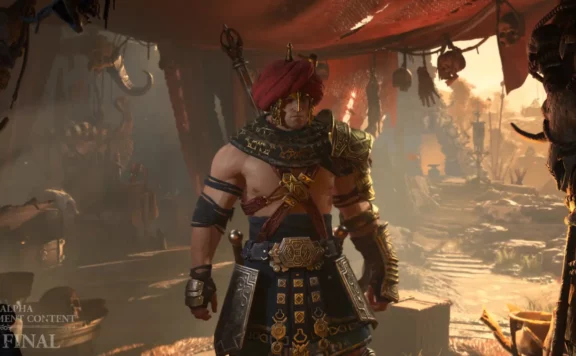Player spending in video games has shifted from mere aesthetics to complex economics. What once started as simple transactions for colorful skins has morphed into nuanced investments in slot features, each with its own implications for user engagement and game monetization strategies. This evolution mirrors the ever-changing landscape of player psychology and spending habits. How did these in-game purchases evolve, and what can they tell us about modern gaming trends? Let’s delve into the evolution of in-game purchases and strategies that keep players hooked and examine the subtle yet profound impact on the economics of gameplay.
Pixel to Profit: Decoding the Shift in Player Expenditure
Gaming’s early days presented a straightforward proposition: purchase a game and enjoy every feature it offered. However, the advent of internet connectivity and digital marketplaces rewrote the rules. Suddenly, games transformed into ongoing services with continuously unfolding content. This shift marked not just a change in how games were played but, crucially, how they were funded.
A watershed moment was the introduction of skins—cosmetic items that add no tactical advantage but offer personalization. But why did players willingly open their wallets for something so superficial? Answering this requires peering into the intricate world of player psychology and self-expression.
It didn’t end there. Game developers noticed engagement spikes following skin releases—a clear signal. They expanded their offerings; now, players could buy characters or even pay for features like bonus slots, which translated directly to gameplay advantages or access to unique content.
This new era saw virtual economies blossoming within game worlds. With player spending becoming as diverse as the users themselves, we’ve witnessed an industry pivot from selling products to selling experiences—and players are enthusiastically buying in. Understanding this trend provides invaluable insights into modern gaming’s economics and user engagement strategies.
Beyond Vanity: The Inception of Gameplay Economics
The monetization model that once seemed reserved for aesthetic indulgences soon paved the way for a more complex in-game economy. This evolution from skins to substantial content has fundamentally altered user expectations and engagement.
Initially, skins served as a tool for players to express individuality within a virtual world—a digital extension of one’s persona. However, as developers delved deeper into behavioral economics, they discovered that players were willing to invest in expression, progression, and exclusivity. Enter stage left: purchasable in-game advancements and exclusive features.
Games began offering ‘shortcuts’ or enhancements that could save time or amplify the gaming experience. These ranged from new characters with unique abilities to early access passes for upcoming content. The line between paying for looks and paying for leverage became increasingly blurred.
Here, the model took an even more significant turn with the concept of ‘slot features’—a direct path to potentially game-changing mechanics often found in online casinos. By adopting similar strategies, game developers tapped into the innate human penchant for instant gratification—a hook that keeps players returning and spending.
Wiring Wins: The Psychology of Purchase Power
When we dissect the potent pull of in-game purchases, a common thread appears: they’re designed to hit psychological triggers. These triggers are about the joy of acquisition and the player’s sense of agency and control over their gaming destiny.
The move from cosmetic skins to gameplay-affecting purchases like bonus buy slots leverages basic human instincts—the desire for reward, the lure of chance, and, once you’ve had bonus buy slots explained, an appreciation for strategic shortcuts. While skins represent identity and status, these gameplay purchases play on our inherent love for efficiency and progress.
Unlike traditional gaming where progression is earned through skill or time investment, feature buys offer an alternative—a way to bypass routine play in favor of instant access to high-stakes rounds. This approach mirrors casino strategies, which provide immediate engagement with potentially high rewards, yet it diverges by integrating these features into broader narratives and game objectives.
These incentive structures shape behavior subtly but significantly. They can motivate players to spend more time (and money) in a game, believing that such investments yield tangible benefits. Understanding this psychological landscape is paramount when designing monetization tactics that feel rewarding without exploiting players’ impulses.

Monetization with Morality: Striking the Delicate Balance
As game developers refine their monetization strategies, they navigate a delicate balance between profit and ethics. The key is to create a system that entices players to spend while maintaining fair play and avoiding predatory practices.
Developers now recognize that in-game purchases need thoughtful integration, particularly when borrowing elements from bonus buy slots or other casino-like features. It’s not just about adding pay-to-win options but about how these purchases are positioned within the game’s economy. Are they enhancing the experience or overshadowing the skill and strategy that define the gameplay?
To address these concerns, industry leaders turn to transparent models where players know what they’re buying and how it impacts their play. This transparency helps build trust and allows players to make informed decisions—an essential aspect of ethical monetization.
Another focus has been on offering various content at different price points, ensuring that all players can access new experiences regardless of their spending ability. This tiered approach can keep the game accessible while still providing ample revenue opportunities through optional purchases.
Case Studies in Conscientious Commerce
Several game developers have set benchmarks for ethical monetization to navigate the intersection of profit and fair play. Their success stories offer insights into practices that respect player choice while maintaining a profitable business model.
One notable example is the use of ‘battle passes’. This system rewards players for completing challenges within a season, offering both free and premium tracks. Those who choose not to spend money still enjoy an enriched experience through the free tier with an option to upgrade at any point—encouraging spending without excluding the non-paying user base.
Another example comes from games that maintain gameplay balance by limiting purchasable items to cosmetics or conveniences that do not provide direct competitive advantages. These items are attractive and sought-after but they don’t tip the scales of fairness—a crucial consideration in multiplayer environments.
Moreover, some companies have instituted spending caps or reminders that prompt players about their in-game purchases. These simple nudges serve as ethical guardrails, helping prevent impulsive spending and fostering a more mindful gaming atmosphere.
Adaptable Ethics: Monetization Across Genres and Platforms
The principles of ethical monetization extend beyond any single genre or platform. Whether it’s mobile games, PC titles, or console experiences, the fundamental tenets can be adjusted to fit a variety of gaming ecosystems.
Mobile games often rely on microtransactions for monetization. Here, developers are innovating ways to offer in-game currency, boosters, or cosmetic items that enhance the mobile experience without becoming gatekeepers to enjoyment. By providing daily rewards and bonuses for engagement rather than just purchase milestones, these games encourage a more consistent return rate while preserving equitable gameplay.
In contrast, PC and console games frequently employ downloadable content (DLC) and expansion packs as part of their monetization strategy. These larger content offerings provide substantial new experiences at a premium. Still, they are designed as optional enhancements rather than necessities—allowing players to continue enjoying the core game without additional investment.
Across all platforms, subscription models have also gained traction as a means to deliver regular content updates and exclusive perks. This system allows for a predictable revenue stream and builds community by offering collective experiences over time.
The Bottom Line
The journey from in-game skins to slot feature buys reflects a nuanced evolution of player spending, which has broadened game economics’ horizons. By focusing on ethics and transparency, developers can forge trust and loyalty among their players.
Ultimately, these monetization models thrive when they strike a balance between profitability and responsibility, ensuring that the gaming industry remains an arena where innovation and fair play coexist harmoniously.







